The belief that the city is an entity apart from nature and even antithetical to it has dominated the way in which the city is perceived and continues to affect how it is built.
The city must be recognized as part of nature and designed accordingly
— Anne Whiston Spirn, The Granite Garden (1984)
Coming on the heels David Maddox’s references to Central Park’s Pale Male red-tailed hawk and David Goode’s recent piece featuring London’s peregrines, it may appear that contributors to The Nature of Cities are fixated on urban raptors. Continuing that thread, it was just yesterday as I sat on the front stoop of the four-plex I’ve shared with friends for more than thirty years in Portland, Oregon (USA), I heard vaguely familiar cries overhead. At first the high-pitched screeching evoked the sound of hungry young red-tailed hawks, begging to be fed. Once I picked them out of the clouds and could see their sleek, swept-back, pointed wings it was clear the plaintive calls were coming from six peregrine falcons who were arrayed, Blue Angel-like across the neighborhood sky. The peregrine flyby was undoubtedly this year’s four fledglings accompanied by both parents from the nearby Fremont Interstate 405 Bridge. The Fremont, a three-span, half-through-tied arch that soars almost four-hundred feet above the Willamette River, the most productive peregrine nesting site in Oregon, has its western-most footings planted firmly in nearby in Portland’s densest neighborhood.
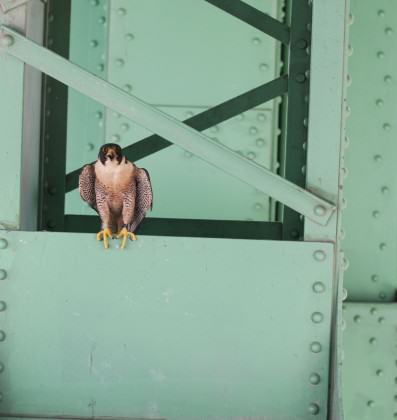
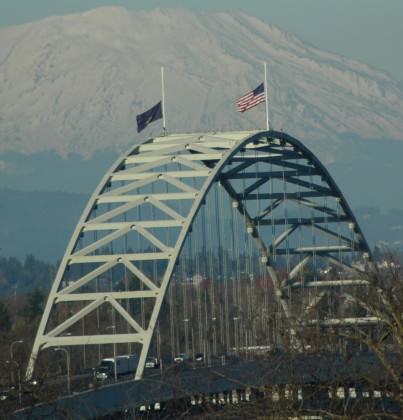
Just a few weeks ago I had a similar aural and visual treat while walking through 5000-acre Forest Park, a ten minute stroll from my apartment. As a friend and I sauntered down Leif Erickson Road I heard, faintly overhead the unmistakable, nasal whinny of a bald eagle. It was soon clear that not one, but six bald eagles were kettling directly overhead, less than a mile from my apartment.
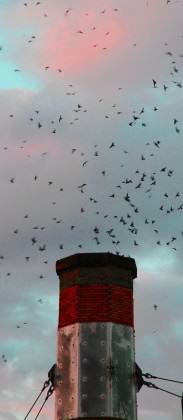
Both the peregrine and eagles sightings came a few blocks from where up to three-thousand nature enthusiasts have migrated during the fall for the past two decades to watch up to 40,000 Vaux’s swifts dive into the chimney at Chapman Elementary School. Families gather with picnic dinners and are treated to a fantastic raptorial display as peregrines slice through the Vaux’s whirling votex or a Cooper’s hawk alights on the chimney’s lip from where they snatch a swift as it enters the opening. Half the onlookers cheer the birds of prey, while the rest boo and root for the swifts’ successful dive into the tall chimney. All of this near the heart of downtown Portland.
Lessons from Colorado
Shortly after the peregrine flyby I grabbed my copy the New York Times and turned on the television to catch the latest about the Colorado fires. More than the magnitude of the blaze and the fact that in excess of 30,000 people had been uprooted from their homes, I was intrigued that one lucky soul, whose house had been untouched by the conflagration, re-located to the steep, rural forested slopes outside Colorado Springs because of a desire to be “close to nature”, to live where they could “watch chipmunks” at their feeder!”
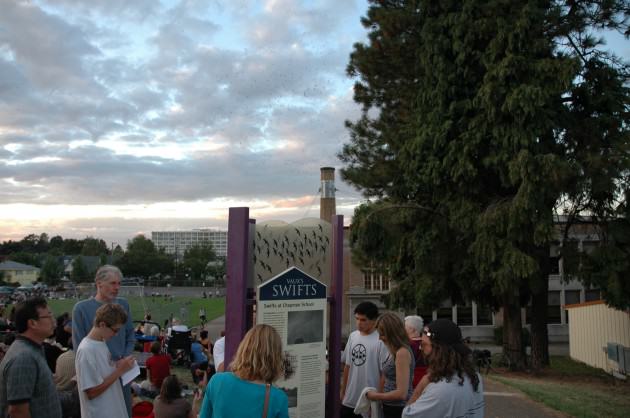
From where I sat, in the densest urban neighborhood in a city of almost 500,000 and metropolitan region of two million–a region that, despite its size, still abounds with wildlife–I was saddened by the tragedy unfolding in Colorado and by the perceived need to locate outside the city in order to commune with nature. Of course their plight has been repeated throughout the country as people seeking their acre or two of paradise build in floodplains, on coastal barrier islands, in wetlands, on steep slopes and other inappropriate landscapes. Ironically, this unsustainable land use pattern fragments wildlife habitat, diminishing the very resource they located their homes to enjoy. Unfortunately, these poor choices are often abetted by local elected officials and planning commissions.
Nature Nearby…In the City
Why the perceived need to build outside the city to “have access to nature?” For too long there has been an anti-urban bias in the United States that has resulted in a desire by some to seek their “piece of nature” outside the city. Even in relatively progressive Portland, I was told by local planners almost forty years ago that there was “no place for nature” in the city. Our urban growth boundary and statewide land use planning program, they asserted, was established to protect nature “out there” beyond the urban fringe. Everything inside the urban growth boundary was “up for grabs”, intended for intense urbanization. If it was nature I wanted there was plenty to be had in the Cascade Mountains, Columbia Gorge or the Oregon coast.
This “real nature is out there” philosophy has even been echoed by some conservation organizations and wildlife agencies whose missions are focused exclusively on protecting pristine rural landscapes. Dedicating limited resources on “trashed” urban habitats, they argued, was, at best, a fool’s errand and at worst a profligate waste of limited resources.
In Livable Cities is Preservation of the Wild
Cities have for too long been demonized. While it’s indisputable that many cities were once oppressive places to live–particularly for the urban poor–and were most certainly not wildlife havens, today there is a growing renaissance in urban planning and design, with access to nature as a central tenet. People are flocking back to the urban core and new alliances of urban pioneers are working to integrate the built and natural landscapes in and around metropolitan regions across the world.
When we founded the Urban Greenspaces Institute in 1999 we adopted as our motto, “In livable cities is preservation of the wild” as a corollary to H D Thoreau’s aphorism, “In wildness is the preservation of the world.”
Protecting the rural wilderness requires an equally aggressive commitment to make our cities more livable and loveable. That requires the protection and restoration of a vibrant urban green infrastructure that includes healthy watersheds, diverse fish and wildlife populations and ecosystems, parks, and recreational trails where the vast majority of our population lives–in cities. It also requires, as David posited in the inaugural The Nature of Cities blog, that cities be viewed and planned as unique ecosystems for both their inherent ecosystem service values and for their contribution to our quality of life.
Many conservation organizations have begun to retool themselves in recognition of the role nature in the urban and urbanizing landscape plays in a broader conservation national agenda and have begun to focus on the protection and restoration of nature in cities as well. In fact, numerous local conservation organizations in the Portland-Vancouver region now focus exclusively on urban nature conservation. The same phenomenon is occurring across the country and internationally.
Yesterday as I reflected on the Colorado wildfires I picked up a copy of our daily paper, The Oregonian. K D Lang was asked why she had recently moved to a condominium in Northwest Portland’s Pearl District. Her response? “I just think the proximity to nature is wonderful.”
When David asked if I’d participate in The Nature of Cities project I jumped at the opportunity to contribute to a dialogue whose primary focus would be nature in the city. Until very recently most efforts regarding “sustainability” in Portland have focused almost exclusively on LEED ratings, energy conservation, transit, and recycling with too little attention paid to protecting and managing nature in the city. Happily, owing to a more than thirty year sustained effort on the part of a few individuals, a growing cadre of NGOs, and a few progressive agencies, we’ve experience a dramatic shift in thinking regarding nature’s role in combining our region’s commitment to maintaining compact urban form while simultaneously striving for an ecologically vibrant city and region. For example, in its new We Build Green Cities initiative the Portland Sustainability Institute recently added natural habitat to its sustainability objectives.
In future contributions to The Nature of Cities I plan to trace the evolution of how our region has moved from a “nature is out there” philosophy to a regional strategy through The Intertwine Alliance to ensure access to nature is equitably distributed throughout the 3,000 square mile Portland-Vancouver metropolitan region. I’ll also explore efforts by the national coalition, the Metropolitan Greenspaces Alliance to mount an effort at the national level to attract more investment from federal natural resource agencies to metropolitan regions across the United States.
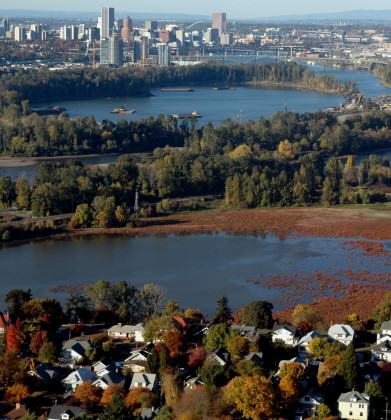

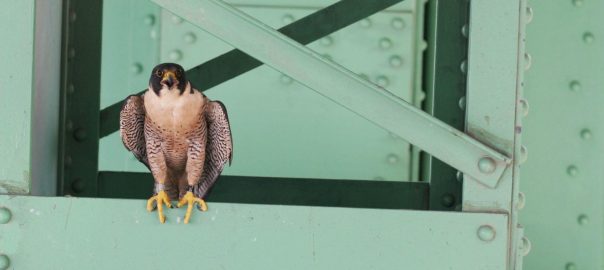






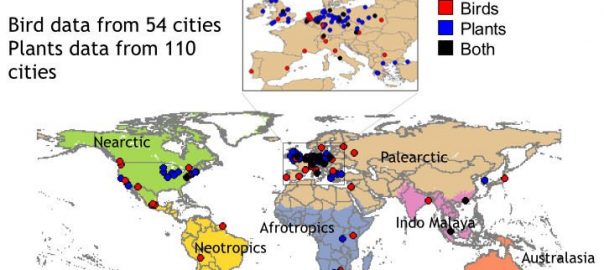
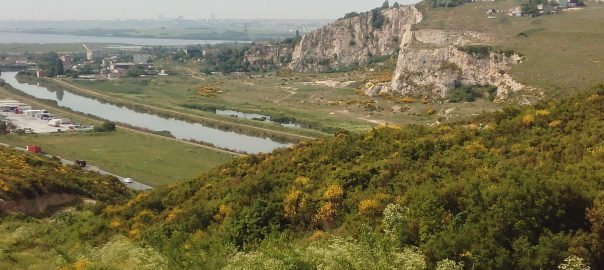
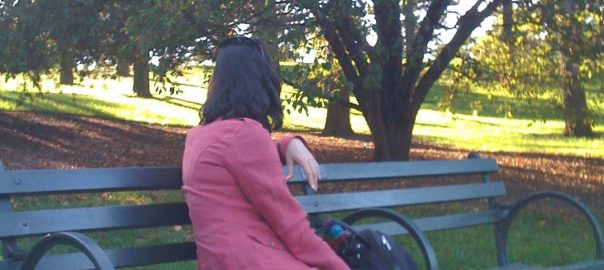
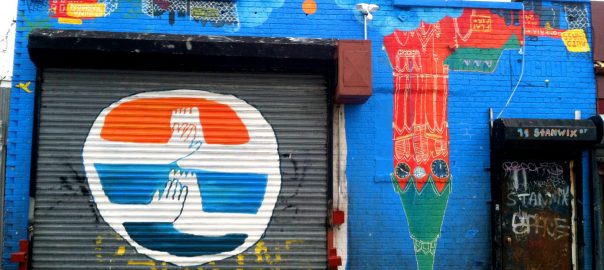
Paul I mean……sorry, skipped an entry! I am planning on co-leading a birding tour to Australia, Nov of 2013. We should discuss that as well! I’d like to check out Brisbane as part of my overall trip.
Mike
Thanks Mike great posting. Can you or others comment a bit more on in the recent addition of ‘natural habitat’ to the sustainability objectives of ‘We Build Green Cities’ and how this change took place.
Paul Schmidt wrote: I am researching adaptive governance of urban nature in Portland OR and my home city Brisbane, Australia and I’m very interested in how natural environment maintains a place or reintegrates back into sustainable development objectives. Many of the arguments for sustainable development in my city Brisbane, Australia have become focused on built environment and green-tech, public transport and renewable energy (Not to say these aren’t important also!). What groups/forums/processes have helped the Portland Sustainability Institute to keep/regain the habitat focus?
Bill,
That’s a rather long, long story………one which is yet not completely written, of course! Your experience mirrors my/our own. It is only very, very recently that a more serious lens has been focused on urban biodiversity. Frankly, when I started 42 years ago by one measure and 32 as a professional urban naturalist, as I think I stated in my posting, urban nature was not considered at all. The reason I referenced “We Build Green Cities”, and I trust Rob Bennett [Director of the Portland Sustainability Center[ and Susan Anderson [Director of Portland’s Bureau of Sustainability] will not take too much offense, is the very fact that urban habitat was even mentioned in what has heretofore been almost exclusively focused on the issues your referenced [green technology, energy conservation, transit] represents an institutional shift—I trust–within Portland planning community toward integrating the natural and physical landscapes.
It would take far too much space and time to fully cover that transition, which I do propose to do in a future blog. Meanwhile you and anyone else interested in that transition are welcome to contact me directly at [email protected] and I’ll fill you in with the details.
I would also suggest you contact Rob Bennett directly at [email protected] and Susan Anderson at [email protected] to solicit their perspectives. I will give them a heads up as I doubt they’re visiting this site…although I will encourage them both to do so! I should emphasize, however, that this is not entirely a Portland story, although Portland is an incredibly important leader in the region. As you probably know, but other visitors to TNOC may not, we are fortunate to have the only directly elected regional government in the US. And, by law, all 25 cities and 3 counties within Metro’s jurisdiction [www.oregonmetro.gov] must amend their comprehensive plans to conform to regional planning goals. I am also happy to discuss the importance of regional governance with you.
Enough for now
Cheers
Mike Houck
Thanks Mike great posting. Can you or others comment a bit more on in the recent addition of ‘natural habitat’ to the sustainability objectives of ‘We Build Green Cities’ and how this change took place.
I am researching adaptive governance of urban nature in Portland OR and my home city Brisbane, Australia and I’m very interested in how natural environment maintains a place or reintegrates back into sustainable development objectives. Many of the arguments for sustainable development in my city Brisbane, Australia have become focused on built environment and green-tech, public transport and renewable energy (Not to say these aren’t important also!). What groups/forums/processes have helped the Portland Sustainability Institute to keep/regain the habitat focus?
As much as I’m an advocate for “(wild) nature in the cities,” I take issue with David’s comment that “urban nature should be a HIGHER PRIORITY for conservation than wild areas.” Perhaps David means increased emphasis needs to be put on the conservation of urban wildness and biodiversity? Maybe there’s a need for greater balance between the two, but to me it seems there are simply far too many species (and ecosystems) that cannot survive urban habitats to say urban landscapes should be made a higher priority than wild ones. Plus there’s the need to limit the human “footprint,” which continues to degrade wild landscapes (and waters) around the world. But maybe I’m nitpicking and we’re essentially saying the same thing.
As for Jesse Walter’s piece on NPR, while I enjoyed his take on urban adventuring (and could appreciate his sentiment about the best way to protect wilderness), his needs and desires are much different than my own. As is his idea of solitude!
David,
No argument from me on any of the points you make. As an aside, a great piece ran on NPR yesterday that I thought I’d share. Isn’t about biodiversity or the science of nature in the city, but it does illustrate an example of blending access to nature and other great attributes of the city. Author Jess Walter’s passage from his interview, which you can access at (take a listen)
http://www.npr.org/2012/07/06/156209461/wish-you-were-here-city-kayaking-in-seattle,
“Because I love cities. Because there’s something sublime about kayaking for cocktails (I’ve yet to get a PUI — paddling under the influence). But mostly it’s because I’m an urban outdoors man; I believe the best way to protect the wilderness is to stay the hell out of it. So my favorite kayak spot is here: a 580-acre lake entirely contained within the borders of Seattle.”
This philosophy is consistent with my motto: “In livable cities is preservation of the wild.” If we can link efforts to protect urban biodiversity with the other attributes of great cities I believe we can create a new, healthier, positive attitude toward cities, making them desirable places to live, thereby enhancing efforts to protect the rural wilds.
Mike Houck
On the point of nature nearby, and despoiling the very things that people move away from the cites to be near: I think a strong case can be made that urban nature should be a HIGHER priority for conservation than “wild areas”. In places like the US and Europe protection schemes for wild lands are quite strong, both legally and increasingly culturally, and in other places too. Not everywhere, but many places.
By contrast, biodiversity protection in urban areas is weak, and receives little attention from the big conservation organizations and most city and regional governments. Research in and inventory of biodiversity in urban spaces is really just getting off the ground. But we know that important biodiversity does exist in cites, and as mega-corridors urbanized zones are critical for migrating routes.
And the people care about it and want biodiversity as part of their green cites. We increasingly appreciate that people who live in urban areas benefit from biodiversity (more research is needed). And, at the risk of being crude, many of the major supporters of Consevation organizations live in cites.
Several of the major conservation organization have changed their missions statements to include people. We really need to ramp up conservation research and action in the very places that people and biodiversity occur together, for the good of both biodiversity and people.
I also wrote something about this at http://sound-science.org/blog/2012/02/09/shift-investment-to-urban-biodiversity/#more-112
Thanks for this posting, Mike. Perhaps because raptors are not scarce in the Anchorage area, even more than your peregrine and bald eagle sightings I was enthralled to read about the chimney-diving Vaux’s swifts. Wow! (Of course, as you note, with the huge gathering of swifts, Portland residents also get to watch raptors in action, a double treat. I would likely be among the ranks of those rooting for the swifts.) Since I’ve never witnessed flocks of swifts in action (or even seen a single one, that I recall, though perhaps I did before I became enamored of birds in my 40s), I can’t help but wonder: what happens to all those swifts when they dive into such a chimney?
The description of the swifts and their chimney diving also reminds me of a story I recently read in the July-August 2012 issue of BirdWatcher’s Digest, “Killer Pipes,” which reports on the hugely deadly toll that open pipes — most notably 4-inch-wide PVC pipes, like those used in claim staking — have been taking on birds for at least a few decades (and likely longer). I had no idea.
Moving on to your “Lessons from Colorado,” I found myself nodding in agreement when you reflected and commented upon the choice of people to settle in “paradise” so that they can more easily commune or connect with nature, while that same choice, as you note, often degrades or otherwise compromises the paradise they’re “invading.”
I also second your comments about the dangers that arise when conservationists, wildlife advocates, and others place too much emphasis on wilderness protections and, whether intentionally or not, suggest that only “pristine” wildlands deserve our reverence and special consideration (including conservation/preservation dollars). As you and others point out — I especially recall an essay that Wendell Berry once wrote, in Orion magazine I believe — the implication is clear: that “lesser” places can be treated with less respect, even trashed. This is a real problem, and an awful message to send.
I like and support that idea that “liveable” — and green — cities contribute to the preservation of the wild, both within the urban centers themselves, and beyond. The recognition and message that wild nature is present, and can thrive, in cities as well as “out there,” is an important one. As are the understandings that we are part of, and connected to, nature wherever we live. And that in fact we carry wildness within us. Wildness is part of who we are, wherever we are.
Thanks again, Mike, for your reflections and ideas here. As with your postings at America’s WILD READ, I look forward to learning more about what’s happened in the Portland-Vancouver region and its broader implications and applications.